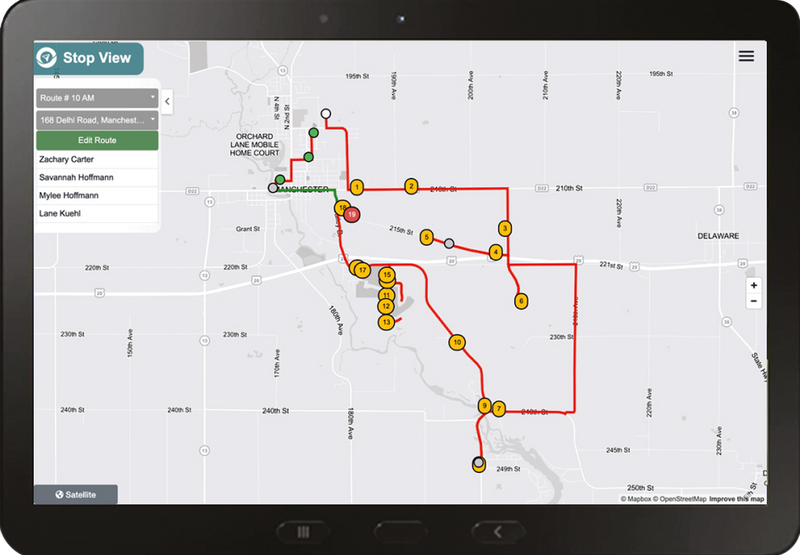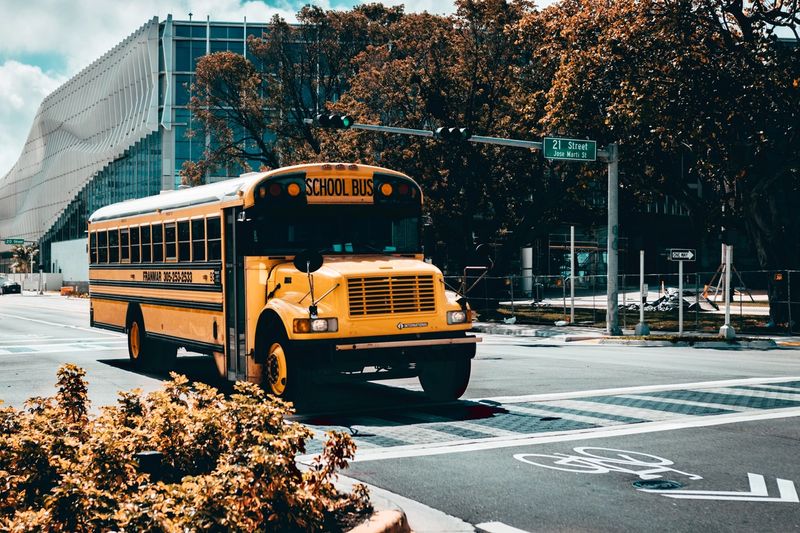
Customer
Somerset Independent School District
Situation
The goal of organizing routes while needing to solidify ridership numbers
Solution
Consolidating routes based on bus utilization metrics
Results
Ten routes reduced to six, five-year savings of $910,000, lower maintenance, fuel, depreciation, and labor, longer vehicle longevity, and stronger communication channels with community members
Ridership Utilization Eliminates 4 Routes Saving Nearly $1M Over 5 Years
ConnectED Bus Crosswalk K-12 · Somerset Independent School DistrictIn 2022, Somerset ISD‘s Transportation Director, Michael Balderrama, contacted Premier Wireless along with UniteGPS to assist with an in-depth route consolidation project. The rural school district already had a subscription to Premier’s Crosswalk K-12; to take advantage of the technology, Balderrama used the software to its maximum potential by deliberately applying ridership utilization data to restructure routes.
All too often in the United States, school district officials face massive budget constraints and challenges. This was no exception when Michael Balderrama became the Director of Transportation at Somerset ISD in February 2022.
Entering the role amid a pandemic and hiring shortage, the former school principal and current Ph.D. candidate has transformed student transportation in his community. How? By investing time and effort into leveraging GPS technology.

Situation
Right from the start, the district’s shrinking school transportation budget concerned Balderrama. To conserve resources, his logical strategy to boost efficiency was to combine routes. Yet his colleagues wondered if this would be feasible since half the seats on every bus were assigned to students. You couldn’t combine 43 passengers from bus A and 48 passengers from bus B onto a single 77-person bus, or could you?
Understanding the task at hand, Balderrama discerned that before combining any routes, first he had to determine which students were assigned a route-but never actually rode. The initiative to utilize the routing software ultimately paid off.
Upon review of the data, he realized that only half of the students assigned a route were riders.

Solution
Considering that Somerset ISD’s Transportation Department already had a Premier’s Crosswalk K-12 account, they were equipped to delve into software and analyze student ridership. Based on the information gathered and examined, administrators understood why buses appeared so empty.
Soon enough, the team saw that less than half of the students with reserved seats on the bus were actual riders. Despite rosters listing up to 57 students, the numbers showed that many buses only carried around 20 on average.
This is when Balderrama grasped: student bus assignments and attendance must be consistently monitored to ensure route accuracy. Together, the team clearly identified an opportunity to consolidate routes due to low utilization. In effect, not only was this plausible but necessary to make better use of resources.
At the core of Somerset ISD’s predicament was a case of “ghost ridership,” meaning students who had a bus route assignment but didn’t use the service. In the end, Balderrama and his team solved this dilemma with Premier’s Crosswalk K-12’s Stop Check Report to follow as well as evaluate daily ridership.

"Through data, we were able to determine the most efficient way to run the department and modify routes that serve our students to the best of our ability. Eliminating four routes is a major milestone, especially for a growing school district."

Results
After this assessment came extensive route consolidations to allocate resources more effectively; once Somerset ISD transportation leaders knew the ridership figures, they began condensing ten routes down to six. Following the successful review and consolidation, the department estimates over $910,000 in annual savings over the next five years, including maintenance, fuel, depreciation, and labor cost. This is a reasonable estimate because it’s rare to eliminate a route once it has been created.

Today Somerset ISD projects an estimated $134,000 in minimized labor costs with five fewer full-time employees with benefits. Although some employees now have more than one route, this includes three drivers earning $30,000 annually and two bus assistants with $22,000.

According to Balderrama, the route consolidation process has offset annual depreciation costs by over $15,000, adding to the lifespan of Somerset ISD’s bus fleet. On average, the district purchases buses for $115,000 that operate for up to 20 years. Despite continuous depreciation, the department gained the ability to delegate buses on a case-by-case basis. Depending on the journey type and particular vehicle, now the department can methodically choose which bus to deploy for long-distance trips while others stay more local.

All the while, one of the most important benefits of the overhaul is refined correspondence with drivers. Being in a rural area of Texas with buses covering 84 square miles, Balderrama can attest that the software has improved the department’s emergency response protocol. That’s to say, no longer must staff pin down the driver’s thereabouts rather they can view the live map location.

Currently using Crosswalk K-12 to its fullest, Somerset ISD can now keep constant tabs on who boarded or alighted a school bus on a daily, weekly, monthly, or yearly basis. Not only does this contribute to student safety but also provides quality peace of mind to parents, admins, and drivers. Since the district expects rapid population growth in the coming years, the software also allows the department to adjust route and bus stop assignments for students at a moment’s notice. Even better, now the transportation department has Fleet View projected in the lobby showing the real-time location of every vehicle for quick and easy reference.

At the end of the day, Somerset ISD’s Crosswalk K-12 usage brought in a new era of customer service. Once upon a time, parents and guardians would call if the bus was behind schedule. This is no longer the case with the mobile app where users can view the bus journey as it’s happening. Because of this new level of transparency, Balderrama says that administrators can finally focus on other important operations. According to him, this has really allowed supervisors to actually supervise instead of “getting in the weeds.”

Crosswalk K-12
Managing your school district's transportation department can be both challenging and time consuming. ConnectED Bus Crosswalk provides the tools to increase safety, reduce expenses and improve response times with:
- GPS & Student Ridership
- Routing
- Pre & Post Trip Inspections
- Field Trip Management
- Turn-by-Turn Directions
- Health & Sanitation Management
- Parent & Student App
- School Information System (SIS) Integration

Contact Us for More Information
Contact Premier Wireless today to see how we can help.
